Original images held by the Harvard-Yenching Library of the Harvard College Library, Harvard University
Summary written by Jingyi Yuan (Regional Studies – East Asia, Harvard University)
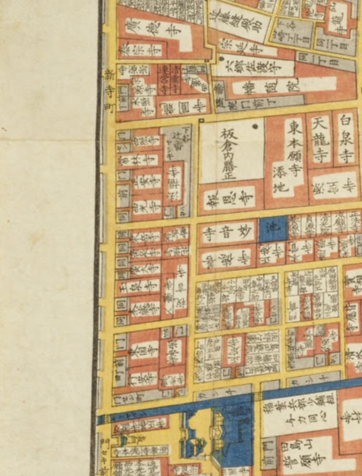
Image 1: Asakusa Shintera-machi 浅草新寺町 in the series of maps called Edo kirie-zu 江戸切絵図 published in 1853 (Kae 6). Accessed through the Center for Open Data in the Humanities
The volume of the Shichi kannon kyō zue 七観音経圖會 (“Illustrations of the seven Kannon sutras”) held at the Harvard-Yenching Library was published in 1818 (Bunka 15) by Izumiya Shōjirō 和泉屋庄次郎. It is a revised edition that was carved during the winter of 1808 文化歳次戊辰冬十一月改刻 with the Heart Sutra (Hannya haramitta shingyō 般若波羅蜜多心経) added. It is noteworthy that the publisher was located in the Asakusa Shintera-machi 浅草新寺町 (nowadays Asakusa-dōri 浅草通り). Following the 1657 (Mereki 明暦 3) fire that reduced many temples in Edo City to ashes, many of them relocated from the area stretching from Ueno to Asakusa, to the newly established Asakusa Shintera-machi (Image 1). Among these temples, the most renowned one was the Asakusa Hongan-ji 浅草本願寺 (currently called Higashi Hongan-ji 東本願寺) of the Jōdo Shinshū 浄土真宗. The first page of the Shichi kannon kyō zue includes two advertisements, one of which promotes the book itself, highlighting its portability, as it can be carried in a chest pocket. The other advertisement is for a recently carved book featuring Praises to the Shorter Sukhāvatīvyūha Sūtra (Amida kyō raisen 阿弥陀経礼讃). Therefore, Izumiya Shōjirō might be one of the publishers producing books related to Pure Land and Kannon worship, which could have been souvenirs for visitors to neighboring temples.
The first part of the volume comprises a modified guide for the 33-day worship of Kannon, with each day dedicated to a specific type of the bodhisattva, but only contains descriptions and images from Day 18 onward. The compilation of the list would have been inspired by the pilgrimage of thirty-three Buddhist temples throughout the Kansai region of Japan (saigoku sanjūsansho 西国三十三所), but the Shichi kannon kyō zue places strong emphasis on various forms of the deities, providing visual depictions of their appearance and their miraculous abilities to save devotees. The volume does reference the famous thirty-three sites: Daigo-ji 醍醐寺 in Kyoto, the eleventh site on the Saigoku Kannon pilgrimage, for example, is mentioned for Juntei Kannon 準胝観音 (Sk. Cundī) for Day 22. However, the volume primarily highlights local sites in Edo City. For instance, the Sensōji 浅草寺 is mentioned for housing Shō Kannon 聖観音 for Day 18; Day 19 mentions Komagata-dō 駒形堂 of the Sensōji as a more accessible option to the 29th site in the Saigoku pilgrimage for Batō Kannon 馬頭観音 (Hayagrīva). Thus, the Shichi kannon kyō zue offered a viable alternative to the individuals residing in Edo, enabling them to worship the deities at local sites rather than embarking on a journey to western Japan. Moreover, physical visits to temples become no longer necessary, as readers can carry the guidebook with them and visualize images of the icons via the thorough depictions provided within its pages.
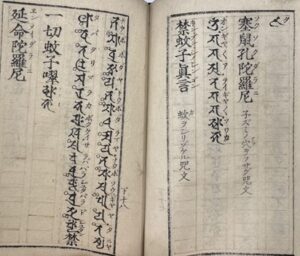
Image 2: Some of the dharanis, including the dharani to prevent mosquito bites (kin bunshi no shingon 禁蚊子真言)
The subsequent portions of the text encompass the Heart Sutra and an assortment of dharanis associated with Kannon. Some of the dharanis are devoted to specific types of Kannon introduced in the earlier segment of the book, whereas others aim to fulfill particular desires or cure various ailments. Interesting examples include a charm to enhance one’s wisdom (sōmeiju 聡明呪), a dharani to trap thieves (bakuzoku no shingon 縛賊真言), and a dharani to prevent mosquito bites (kin bunshi no shingon 禁蚊子真言, Image 2). The final dharani guarantees one’s rebirth in the Amida Pure Land (ketsujō ōshō jōdo no shingon 決定往生浄土真言). Consequently, the volume serves as a useful manual for addressing both this-worldly and afterlife-related concerns.
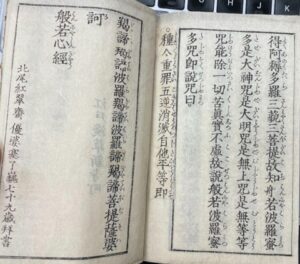
Image 3: Kitao Shigemasa 北尾重政’s sign
As indicated by one of the colophons, the illustrated components of the book were designed by Kitao Shigemasa 北尾重政 (1739-1820). The colophon states, “Kitao Kōsuisai 北尾紅翠齋, Upāsaka Ryōgi 優婆塞了巍 reverently drew [illustrations] in age 79. (Image 3).” However, Kitao’s expertise resided in the production of bijin-ga and yakusha-e, and despite his impressive production of approximately 300 illustrated books bearing his signature, none are Buddhist-themed books. Therefore, the veracity of Kitao’s involvement in the creation of the volume requires further investigation.
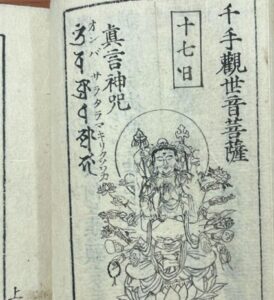
Image 4: A piece of paper has been affixed to the book in order to correct the illustration around the bodhisattva’s face and chest.
Finally, the volume also serves as a valuable window into the creative and editorial process behind the production of illustrated books, offering a glimpse into the editing-in-progress stage. Notably, the katakana pronunciation of the dharani of White-robed Kannon (hakue kanzeon bosatsu shingon 白衣観世音菩薩真言) is incomplete, indicative of ongoing revisions. Besides, small pieces of paper bearing single characters, groups of characters, or partial illustration are affixed to various places of the book. While some have been attached to their designated spaces (as seen in Images 4 and 5), others remain misplaced, floating in the corners of pages (as seen in Image 6). Thus, the volume visually demonstrates the editor’s cognitive process as they rearrange and reevaluate various components of the book.
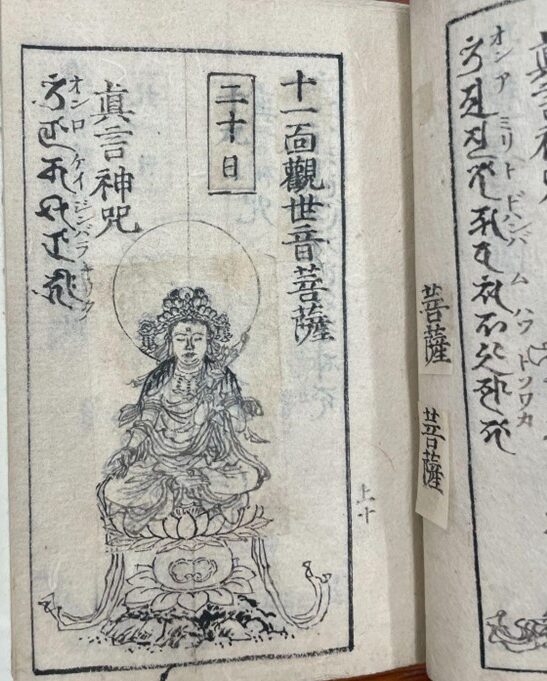
Image 5: The whole body of the Eleven-headed Kannon above the lotus seat is covered with a new illustration, but traces of the original are still vaguely visible. The name of the Kannon and the designated day have also been changed. Besides, there are two sets of characters “bodhisattva” (bosatsu 菩薩) affixed to the right side of the page.
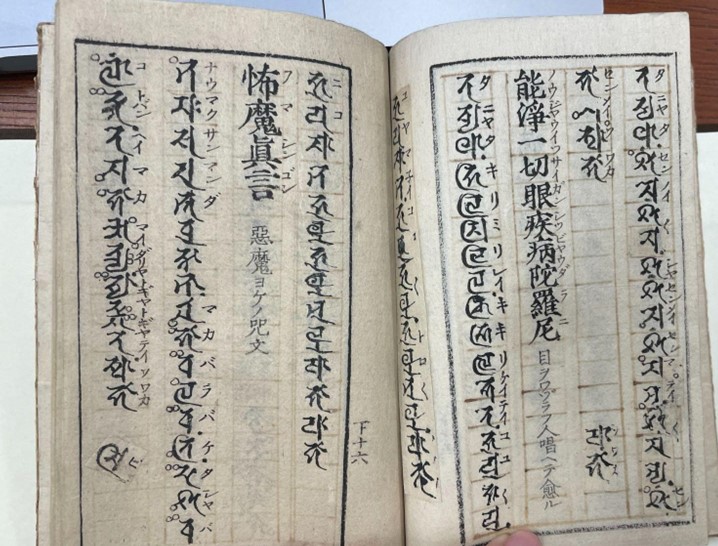
Image 6: Sanskrit syllables are attached to various places of the page.
